It’s about time we heard from Nobuo Uematsu again! I guess when other composers are releasing something seemingly every other month, Uematsu’s two or so releases a year seem too few. We mentioned that this album was set for a January 1, 2009 release, and here it is with 22 tracks and over 75 minutes of new music.
If you take a look back in time here on OSV, you’ll notice that one of our first posts was about this game’s music. Rock to the core, Uematsu employs his own synth work along with live guitar, bass, and drums to drive home the action for this arcade title. It’s pretty cool that they’re even putting out a soundtrack for an arcade game, and hey , the music is good too!
Read our review of the Lord of Vermilion Original Soundtrack after the jump.
You’ve likely heard bits of pieces of the title’s opening theme before, as it’s been used as a sample on the official website. Titled “DAWN of VERMILION –Opening Theme-,” it begins with foreboding bell tolls and wailing guitars in the distance before pausing for a brief moment and launching into the main theme itself. The first thing you’ll notice here is the live sound, with guitar work by Kimio Itoyama, drums by Hideo Yamaki (who actually performed on the Wanderers from Ys Super Arrange Version!), and electric bass by Toshimi Nagai. With this set of live musicians, I don’t know why they didn’t just record with The Black Mages, but yeah, the sound is great. But the actual composition? Uematsu’s work is as upbeat and catchy as ever, which is a good thing given that this theme appears throughout the rest of the album.
“Elm, Capital of Eternal Night” doesn’t sound like a town theme at all. Chugging guitars with string stabs on the upbeats actually lend the piece a heavy layer of tension, and the loud smack of the snare really gets your head bopping. Next, “Renaaru Forest” features a wandering jazz organ progression that totally sounds like some of Kikuta’s work on Seiken Densestu 2, although the choir pads and rockin’ melody that take over leave this element buried underneath many layers. “Pajya Maze” makes use of this glassy percussion that is hit rhythmically, and the bizarre time signature is quite a trip. Definitely a cool piece.
You can really feel the heat with “Wiara Volcano,” as the percussion has this fade effect applied to it that gives it a strange hiss. The distorted, screechy organ also creates a strained sound that fits the setting. My favorite track of the bunch is “Spiege Snow Plains,” which features jingle bells and pizzicato strings alongside these amazingly reverberating belltons and, of course, electric guitars. However, the best thing about it is the melody. It sounds like it’s desperately reaching out to you, and the ascending bridge sections are superb. “Abandoned Castle Rukusaria” follows suit with a fast pace and lots of energy, distinguishing itself with a guttural bass line and phrases that sound like they’re from a progressive rock album and not a game. Seriously, I have no idea how this track works in a game, as it’s a truly a heavy rock experience that I wouldn’t be at all embarrassed to be listening to in my car with the window down.
Another trippy experience comes with “Tyrant’s Place,” which starts with Metroid-esque electronic chirping sounds and this thin, wavey synth pad. It then jumps into the rock that dominates the majority album, which isn’t a bad thing itself, but I was totally loving the intro. Shame it couldn’t become its own track! Well, on to the grand finale. “The Final Enemy” is everything you’d expect from a final battle theme from Uematsu, starting with a spacey organ melody that is joined by a dueling electric guitar before the song evolves into a sort of bluesy track. It gets back to its rock roots down the line, and has these awesome phrases where trailing guitar notes harmonize perfectly with organ chord progressions. Heck, even retro synthesized sounds make an entrance, performing scales over various segments. This is definitely epic.
It doesn’t end there though. “LORD of VERMILION” is next, which is a somber version of the theme sung by vocalist Masumi Harada. All games have to have a vocal song these days, right? I really enjoy the melancholy, new age sound in the background, which stands in contrast to Harada’s clear and beautiful voice. It turns out that this is actually Kimio Itoyama’s work, as he’s credited for the instrumental version that is the final track on the album. This is the definitive version of the main theme.
What’s left? Uematsu’s jingles, of course! “Win” comes in at over 1 minute and 40 seconds, and is a rock tune with metallic clangs that sound like a metal factory at work. “Lose” captures my favor with its use of harpsichord. The melody has a certain sweetness to it, reminiscent of Gau’s theme from the Final Fantasy VI Grand Finale album. “Game Over” features some absolutely epic reverb, and “Continue” is actually a quirky techno track of all things.
So there you have it! Uematsu’s back in town, and I’m impressed. I’m sure some of you out there who are Falcom and Konami rock junkies probably won’t agree, but there’s a certain quality to Uematsu compositions that are immediately satisfying to me. You’ll still hear a hint of that magic that captured all of our hearts and imaginations with his Final Fantasy scores. We’ve mentioned the album artwork before, and it still looks great! The rest of the booklet features various art from the game, and the soundtrack even includes a miniature trading card. I recommend checking this one out. Anyone who complained about the production values of Uematsu’s past works should at least be happy with what Dog Ear Records has done here. It’s available at CD Japan and Play Asia.
Are you still a devout Nobuo Uematsu fan? Have you heard any of the music from Lord of Vermilion and have an opinion as to whether it stands up to Falcom and Konami’s strong rock tradition?
Tags: Arcade, Dog Ear Records, Lord of Vermilion, Music Reviews, Reviews, Rock, Square Enix, Uematsu, Videogame





























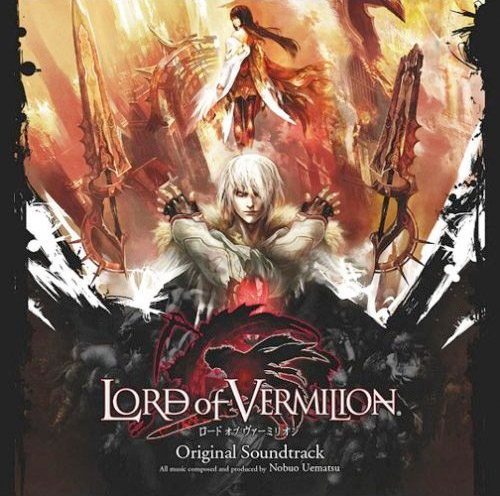
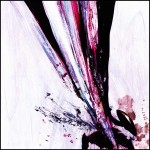
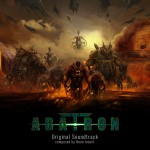
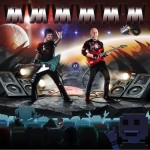
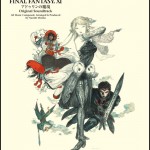







[…] OSV’s introductory posts, I used the game’s title screen as a play on Uematsu’s Lord of Vermilion score, but it’s a huge pleasure to finally be able to write about the music of Sword of […]
I just got around to hearing this. Wow, out of no where. Here comes Nobuo, the rock god. I liked this soundtrack track immediately, on first listen. I think it’s awesome that they decided to go for a rock theme throughout the entire game, and I can’t believe they got Nobuo to do it. It just goes to show how music direction can really make a composer shine, especially when it hits their strong points. It being an arcade game, there was no “filler” music either, which gave the soundtrack a nice rock package. Highly recommended to those who haven’t heard this yet.
I fully intend to get this. Not sure I’m still categorised as a devout Uematsu fan — Blue Dragon and Lost Odyssey OSTs didn’t really grab me (although each had standout tracks). I do remember *vaguely* hearing some of the music to Lord of Vermilion in a game centre somewhere ‘above’ the streets of Akihabara (which is a miracle, since those places are basically hothouses of noise). Also, any sort of JDK crossover=yes.